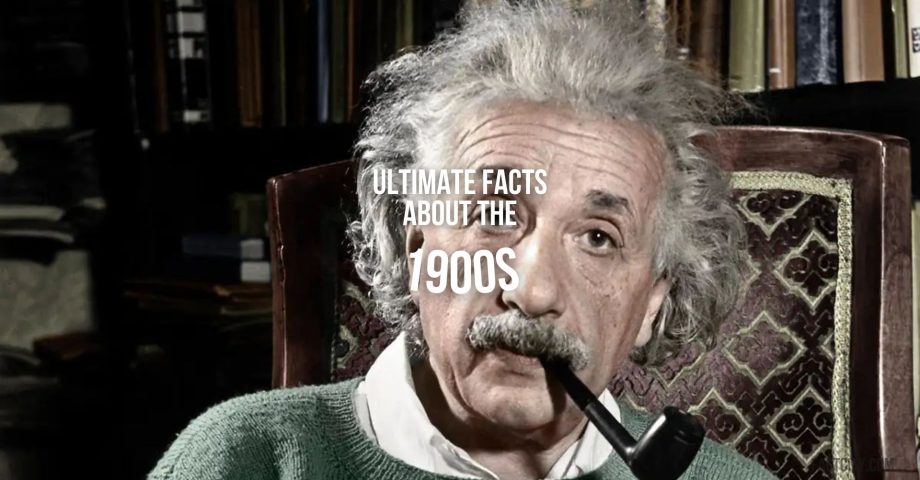The early 1900s, otherwise known as the turn of the century, was an incredible time for progression. Coming out of industrial evolution, this was a decade that saw huge steps forward in communication, travel, and entertainment.
It was a decade of great experimentation – and one of idealism, as first-wave feminism took major strides in opening up opportunities for education across Europe, Russia, and the East.
Sadly, for all it was a time of incredible change and revolution, conflicts still raged on across the decade. It was ten years ahead of the First World War – but the Ottomans made final stands in invading Persia, Japan established itself as a global force to be reckoned with, and we finally saw the Second Boer War come to a close.
The 1900s can refer to the 20th century as a whole, but for this ultimate fact file, we’re focusing purely on the transformative decade that kicked everything off.
Let’s take a look through some of the most important moments of that decade with our ultimate fact guide to the 1900s.
1. The Wright Brothers made history with the world’s first powered flight.
It’s amazing to see how far travel has evolved in such a short space of time. It was only in 1903 that Orville and Wilbur Wright mastered their incredible Wright Flyer, the world’s first powered vehicle to officially launch off the ground. It was an impressive feat, but, bizarrely, one that many people didn’t believe (or even see as important at the time).
However, the Wrights were undeterred. The flight that took place on December 17th, 1903 was only the beginning. The mechanics, who had previously tinkered with bicycles and other transportation experiments, would go on to hone their technology to such an extent that the world sat up and took notice.
Believe it or not, it was only just over a decade later – January 1st, 1914 – when the world’s first passenger flight took off from Florida, US. The Wrights’ work took just over a decade to transform travel for the better – and we’re all the more grateful for their persistence.
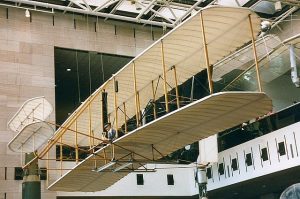
2. US life expectancy was surprisingly low.
It’s safe to say that quality of life has changed dramatically for people in the US over the decades. In fact, according to statistics taken from the year 1906, the average US citizen’s life expectancy was just 46 years old.
Compare that to now – as the average US citizen in the 2020s can expect to live to around 77-78 years of age. This huge leap can be attributed to major changes in healthcare, education, technology, and home comforts – though, there are many other factors that have helped people live longer over the century since.
For example, did you know that only 14% of homes in the US had access to bathtubs? An improvement in hygiene, it seems, could also have boosted life expectancy…
3. Albert Einstein changed the way we see the world thanks to his Theory of Special Relativity.
Albert Einstein is a name that’s thrown around a lot, but his place in history is absolutely justified – as it was toward the start of the 20th century that the scientist proposed his theory of Special Relativity.
It was specifically in 1905 when Einstein first established his science-changing equation, E = mc^2, which refers to how mass, space, and time are hypothetically affected by speed. In particular, Einstein proposed that nothing could be faster than the speed of light – effectively setting a permanent “speed limit” for all potential mass and life in the universe.
Physics scholars will know that Sir Isaac Newton’s studies of the laws of motion proved revolutionary for how we understand how objects move and how forces interact with them. However, it was Einstein’s Special Relativity theory that added to this by accounting for light – and, with it, he determined that time is a relative concept, in that a moving object experiences it differently to a static one.
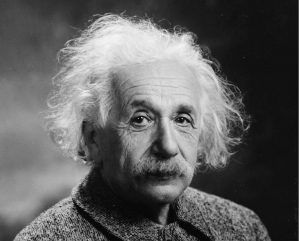
4. Causes of death in the US largely revolved around treatable illness.
Remember fact two? You should, it wasn’t that long ago! Low life expectancy in the US wasn’t just caused by poor hygiene and a lack of modern conveniences – according to death records in the mid-1900s, preventable disease and illness were largely to blame for people dying earlier in life.
It’s thought that influenza, or the flu, and pneumonia were the biggest killers of US citizens midway through the 1900s. Nowadays, while both illnesses persist, we can treat them with a variety of remedies – such as vaccination.
Other major causes of death in the 1900s include tuberculosis, which, again, is treatable partly through vaccination. Heart diseases, strokes, and even diarrhea make the list of the deadliest ways to die, too.
In the 2020s, the major cause of death in the US is now heart disease – with cancer, accidental injury, and even COVID-19 ranking high on recent end-of-year reports.
5. Cars became mainstream purchases thanks to Henry Ford.
Ford is a name in car manufacturing that’s still well known and loved to this day. And, in fact, you can trace the genesis of the automobile boom all the way back to Henry Ford himself, with the founder having set up his car manufacturing company back in 1903.
However, cars didn’t really catch on with the wider public at first. Up to around 1908, they were seen as luxury commodities that demand a lot of financial investment – in some ways, they still do!
But, it was Ford’s Model T that helped to make automobile travel more accessible and affordable for citizens across the US in 1908s. The Model T was so-named because Ford and his crew worked through the whole alphabet up to that point – and it was the firm’s 20th model that finally set the country alight.
The Model T was the US’ first-ever mass-produced vehicle of its kind. Millions of the Model T found its way onto the roads in the years to come, making it a true game-changer.
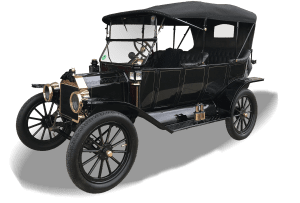
6. Women’s rights took centre stage in the 1900s.
The first decade of the 20th century saw a major boom for gender equality all over the world. Famously, Emmeline Pankhurst formed the Women’s Social and Political Union back in 1903 in her native United Kingdom. This, of course, led to the formation and rise of the Suffragettes movement across the British Isles and into Ireland, where women fought for the right to vote.
Outside the UK, several global universities opened their doors for the first time to female scholars – as truly bizarre as it might seem nowadays, Cuban, Peruvian, Japanese, Russian, and Bulgarian schools finally allowed women to sample university education during the decade.
The Suffragettes movement would eventually win through by 1918, post-WWI, though it wouldn’t be until 1928 that all British women over the age of 21 would get the right to vote in elections.
7. Marconi made radio communication possible at the start of the decade.
Guglielmo Marconi, Italian inventor and engineer extraordinaire, is regarded by billions as the father of modern radio communication. In fact, it was in 1901 that Marconi sent what’s believed to be the world’s very first wireless transmission, starting in Cornwall, UK, and arriving in Canada.
This transmission helped to spell the end for the much relied-upon telegraph, which, up to this point, was depended upon for global communication. The telegraph itself wouldn’t die out fully until after the 1920s (and there were even some systems in operation up to the rise of the internet) – but Marconi’s technology helped to prove that the future was certainly wireless.
What was in Marconi’s first transmission? Funnily enough, that old staple of telegraphy, Morse Code – specifically, he transmitted the code for the letter S – that’s three dots.
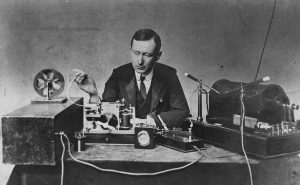
8. Queen Victoria passed away as a record-setter.
Queen Victoria of England is still regarded as one of the most formidable, memorable, and progressive monarchs throughout British history. She sadly passed away at the start of the 1900s, but she left behind nine children, and a regal tenure that would remain the British record until Queen Elizabeth II took the throne some decades later.
Victoria passed away on the Isle of Wight, just to the south of the English coast. She left behind an impressive legacy of over 63 years on the throne, having been Queen for all her adult life – her legacy was so extensive, her name is used to establish an entire era – the Victorian age!
9. France and Britain agreed to co-operate should Germany make advances.
The Entente Cordiale, perhaps one of the most important accords signed between European nations, was officially signed as of 1904.
This was an agreement that effectively aligned France and Great Britain to each other’s causes. It was a diplomatic show of friendly cooperation at a time where, even long before WWI and decades ahead of Adolf Hitler’s rise to power, Germany was making a name for itself on the continent.
This type of treaty was somewhat unheard of at the time – but it proved useful in decades to come, with France and Britain allied closely during both World Wars (and, coming out of both conflicts the victors).
10. SOS was adopted internationally.
Remember what we said about Marconi and the wireless? That famous telegraph distress code, SOS, was officially adopted as an international call sign of distress as of 1906.
The distress signal, otherwise known as dot-dot-dot, dash-dash-dash, is to this day still well-known as the “standard” for raising a call for aid. It just so happened that, at the International Radiotelegraphic Convention – in Berlin, Germany – the code was officially adopted by countries globally.
Morse Code continues to be popular even to this day – when you can simply pick up a smartphone and connect to people on the other side of the planet!
11. Fingerprints came into prominence in crime fighting.
India was strides ahead of the rest of the world when it came to tracing fingerprints from suspected criminals – they’d set up the very first fingerprint bureau all the way back in 1897, in Calcutta. However, fingerprints weren’t actually adopted in European policing until 1901, when England’s Scotland Yard took up the practice.
Fingerprints are highly useful in helping to tie criminal cases back to specific people – as our prints are highly complex! Though there are more complex and confident ways to trace criminals in the 2020s, the start of the century saw a boom in print-dusting.
This resulted in a major breakthrough toward the end of the decade – because, in 1909, police used fingerprints to solve a murder for the first time!

12. We reached the North Pole for the first time.
Thought that all the important expeditions and explorations took place before 1900? Think again. 1909 saw explorers Matthew Henson and Robert Peary reach the North Pole, as of April 6th.
That is, they’re the first people to reach the Pole as far as we know. There have been some disputes over the years as to the veracity of Henson and Peary’s claims – for example, despite having been certified by National Geographic, the American Geographical Society thought it to be a ruse.
At least we can say people have reached the Pole since – regardless of whether or not that first claim was true!
13. President McKinley was assassinated.
Regrettably, the US remained no stranger to political assassinations at the start of the 1900s, as then-President William McKinley was shot on September 6th, 1901.
McKinley was barely half a year into his second term as President and was attending a public event – only to be shot twice by Leon Czolgosz, who had hidden a gun away under a handkerchief.
Most devastatingly for McKinley and his family, the President didn’t pass away until September 14th. He was killed by gangrene – and within a month and a half, his killer was electrocuted to death.
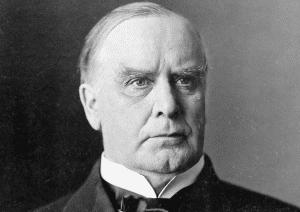
14. It’s a decade regarded as the Edwardian era.
Just as the time period served by Queen Victoria was regarded as the Victorian era, the 1900s are known as the Edwardian period – at least, from 1901 to 1910. It’s named after the next monarch to come to the English throne, King Edward VII.
In some cases, the Edwardian period extends up to the outbreak of World War I in 1914, though King George V had come to power at its outbreak.
Regardless, the 1900s are widely marked as the era of Edward VII, with major democratic reforms occurring elsewhere in Britain at the time.
15. Cinema made its debut.
Of course, the 1900s is also the decade during which we started seeing movies for the first time – the very first “feature” film, titled “The Story of The Kelly Gang,” was unveiled to the Australian public as of December 26th, 1906.
However, three years before this release, the US had welcomed the enormously successful “Great Train Robbery,” which welcomed people into cinemas to take on a whole new kind of entertainment. Remember, we were still a few years away from TV at this point, and radio broadcasts were in their infancy!
That said, music remained as popular as ever – and back in those days, you heard about popular songs through hymn collections!

16. Japan asserted dominance over Russia.
A decade before the world went to war, the Russo-Japanese War of the 1900s is regarded as the deadliest of the decade. This was an international tussle over various territories in the East, in particular Korea – and Japan would emerge the victors.
Russia was humiliated by their defeat against the Japanese, and as a result, revolution was brewing – Russia would experience its first revolution in 1905, and while the Tsar retained control to some extent, his reign would fall to Vladimir Lenin and the Bolsheviks in the years that followed.
Regardless, the Russo-Japanese conflict would establish Japan as a strong empire in the face of an ever-changing West.
FAQs About The 1900s
What was the 1900s known for?
The 1900s was a decade well-known for rapid progression of technology and the rise of the automobile – but, it was also an important decade for international relations. During this time, Britain and France cemented an alliance. However, it was also a bitterly-fought period out East, as Japan and Russia fought over territory.
What was life really like in the 1900s?
We can only really tell what life was like in the 1900s based on written accounts now – but looking at records, we can tell that the average household in the US had no car, telephone, or even a bath! In fact, many young people in the era didn’t even go to school – they went straight into workhouses. Of course, societal change was just around the corner – but back then, people worked hard for what they got, and they made do!
What was big in the 1900s?
The automobile, of course, was the big deal most people talk about from the first decade of the 20th century. However, it was also the decade of flight, as the Wright Brothers made a plane fly for the very first time – it was a decade full of big transportation dreams.
Do you know any interesting facts about the 1900s? Share them in the comments below!
